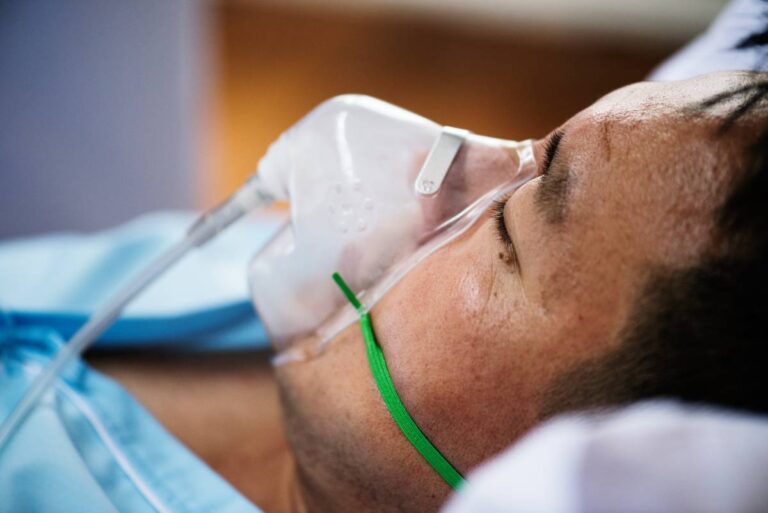Flumazenil, also known by one of its brand names, Romazicon, is a drug that inhibits the activity of a drug class known as benzodiazepines, commonly used in anesthesia. Benzodiazepines are depressant drugs that slow down, or depress, signaling in the brain and nervous system. Common benzodiazepines include Valium, Xanax, and Klonopin. As an antagonist of benzodiazepines, flumazenil binds to the benzodiazepine binding site on GABA-A receptors and prevents them from exerting their effect. As such, flumazenil is approved for reversing benzodiazepine overdoses.1
Benzodiazepines and the range of calming effects they can produce are useful in the surgical setting. Relieving stress, reducing anxiety, inducing sedation, and, at high doses, inducing general anesthesia, are all approved indications for perioperative benzodiazepines.2 Their use is widespread in certain settings: 4 out of 5 patients undergoing major orthopedic surgery in the United States, for instance, receive one or multiple benzodiazepines during surgery.3 Flumazenil, therefore, is commonly used to reverse the sedative effects of benzodiazepines when used in anesthesia.
Flumazenil is given as an intravenous infusion, and due to its short half-life, multiple doses are sometimes needed. Side effects from the drug are rare, but agitation, anxiety, gastrointestinal symptoms, and dizziness have all been reported. Even rarer reported side effects include cardiac dysrhythmias and seizures, though these were reported when flumazenil was used to reverse a benzodiazepine overdose and may be related to effects from the depressants, rather than from flumazenil itself.4
Though it is not without side effects, flumazenil is a versatile drug shown to reverse the effects of several different types of general anesthesia. In one study, patients who underwent general anesthesia with isoflurane that received flumazenil at the end of anesthesia had faster extubation compared with patients who received a placebo.5 A second, similar study showed that patients receiving flumazenil also demonstrated a shorter time to spontaneous respiration and eye opening and hand squeezing on verbal command, and had a higher bispectral index (a measurement of brain electrical activity), compared with those receiving a placebo.6
When deciding on an anesthesia regimen for a given patient, an anesthesiologist must consider not only the length of the operation and any contraindications or side effects but also the extent to which the anesthesia can be reversed. Many anesthetic agents are rapidly broken down in the body, leading to recovery of consciousness shortly after the end of its infusion. Recovery from propofol, for example, can occur within one hour after propofol sedation.7 However, multiple studies have shown that patients who receive a benzodiazepine followed by flumazenil have faster recovery times than those who receive propofol. Although the benzodiazepine remimazolam alone leads to a slower recovery of consciousness compared with propofol, patients undergoing a thyroidectomy who received flumazenil with remimazolam have significantly faster eye opening and extubation The same result was seen, in a separate study, in patients undergoing an operation known as a radiofrequency catheter ablation for an atrial fibrillation, which is These studies suggest that flumazenil effectively ensures that patients have a quicker recovery time from anesthesia following surgery. Nonetheless, patients should always consult their physicians to see if it is right for them.
References
1. Sharbaf Shoar, N., Bistas, K. G., Patel, P. & Saadabadi, A. Flumazenil. in StatPearls (StatPearls Publishing, Treasure Island (FL), 2025).
2. Spence, J. et al. Safety and efficacy of perioperative benzodiazepine administration: study protocol for a systematic review and meta-analysis. BMJ Open 9, e031895 (2019), DOI: 10.1136/bmjopen-2019-031895
3. Cozowicz, C. et al. The Perioperative Use of Benzodiazepines for Major Orthopedic Surgery in the United States. Anesth. Analg. 134, 486–495 (2022), DOI: 10.1213/ANE.0000000000005854
4. Penninga, E. I., Graudal, N., Ladekarl, M. B. & Jürgens, G. Adverse Events Associated with Flumazenil Treatment for the Management of Suspected Benzodiazepine Intoxication–A Systematic Review with Meta-Analyses of Randomised Trials. Basic Clin. Pharmacol. Toxicol. 118, 37–44 (2016), DOI: 10.1111/bcpt.12434
5. Cicarelli, D. D. et al. Effect of flumazenil on recovery from general anesthesia with isoflurane: A randomized controlled trial. Scien. and Techn. Research. 44, 8-12 (2016). DOI: 10.1016/j.rcae.2015.06.004
6. Kim, Y. J. et al. Effect of flumazenil on recovery from anesthesia and the bispectral index after sevoflurane/fentanyl general anesthesia in unpremedicated patients. Korean J. Anesthesiol. 62, 19–23 (2012), DOI: 10.4097/kjae.2012.62.1.19
7. Hao, X.-W. et al. Recovery of driving skills after endoscopy under propofol sedation: a prospective pilot study to assess the driving skills after endoscopic sedation using driving simulation. BMC Anesthesiol. 23, 223 (2023), DOI: 10.1186/s12871-023-02122-z
8. Lee, H.-J. et al. Comparison of the recovery profile of remimazolam with flumazenil and propofol anesthesia for open thyroidectomy. BMC Anesthesiol. 23, 147 (2023), DOI: 10.1186/s12871-023-02104-1
9. Lee, S. et al. Remimazolam-flumazenil provides fast recovery from general anesthesia compared to propofol during radiofrequency catheter ablation of atrial fibrillation. Sci. Rep. 14, 12660 (2024), DOI: 10.1038/s41598-024-63578-8

